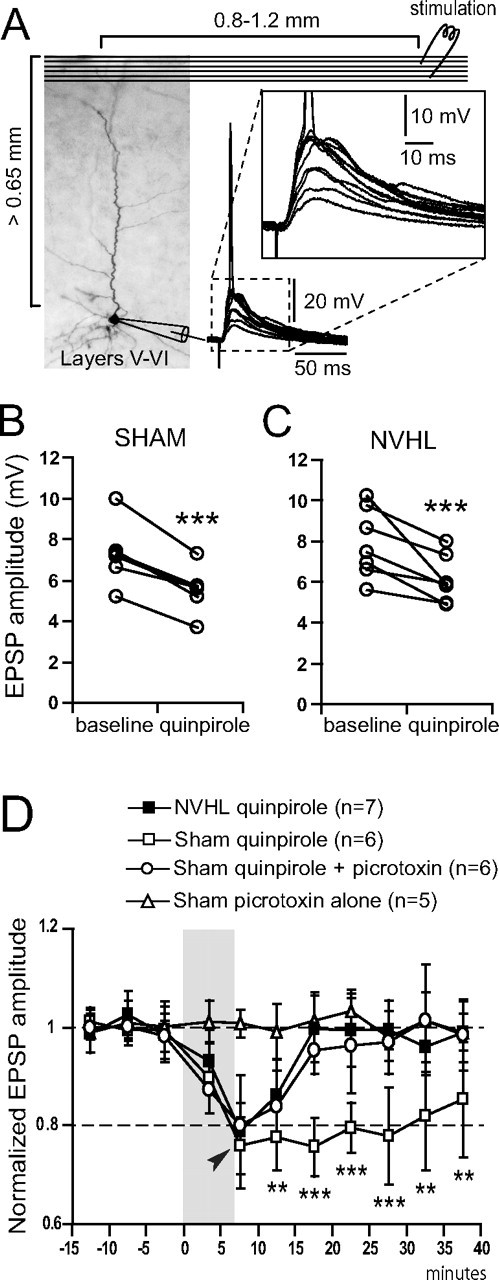Figure 5.

Loss of a D2-dependent GABA modulation of synaptic responses of pyramidal neurons in NVHL rats. A, Electrical stimulation of layers I–II in the medial PFC of NVHL elicited a primarily AMPA-dependent EPSP in deep layer pyramidal neurons. Diagram illustrating the arrangement of stimulating electrode (top right; layers I–II) and recording sites (bottom left; layers V–VI), along with an overlay of EPSPs recorded in the pyramidal neuron. Inset shows EPSPs at higher magnification. B, Diagram illustrating the decrease in EPSP amplitude by quinpirole (2 μm) in slices from sham rats. C, Plot illustrating the effects of quinpirole in slices from NVHL rats. D, Plot summarizing the time course of these effects. The D2-dependent synaptic attenuation in pyramidal neurons was persistent in the PFC of sham rats (open squares) but not in NVHL rats (filled squares). The GABAA antagonist picrotoxin blocked the persistent component of this D2 effect in slices from sham rats (open circles) but did not affect the response when given alone (open triangles). Thus, the D2 modulation of corticocortical synaptic responses in adult NVHL rats lacks the recruitment of interneurons. *p < 0.05, **p < 0.005, ***p < 0.0005; quinpirole versus quinpirole plus picrotoxin.
